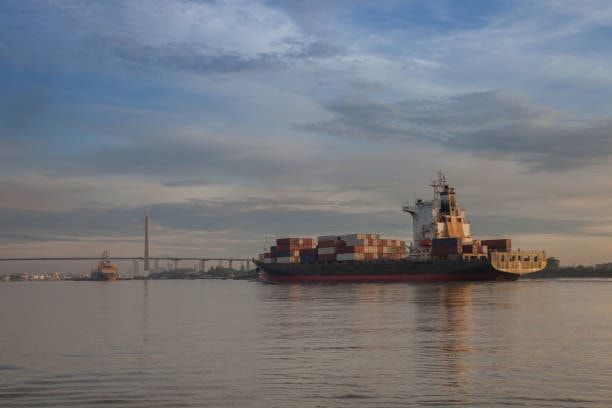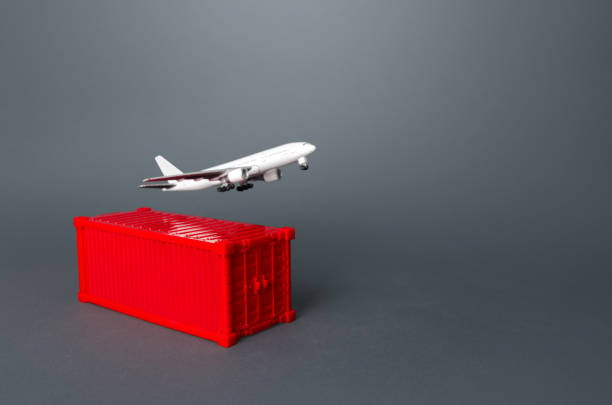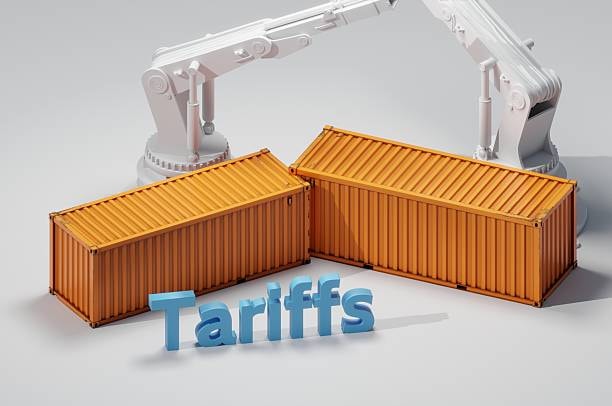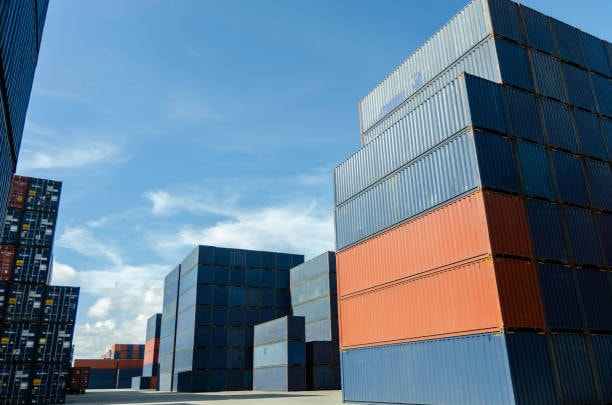
Meta Description: Find out the complete details of shipping cost to ship to china such as air freight, shipping cost by sea, express delivery costs flat rate shipping, custom taxes, customs invoice, and budget saving ideas. The 2025 guide to businesses and individuals ecommerce businesses.

The significance of shipping to China has been on the rise due to the fact that this nation has remained one of the greatest centers of production, online marketing, and global commerce. It is important to understand the different shipping costs and charges in the shipping process there are so as to either run your businesses with the help of shipping and fulfillment experts or to save on whatever you are shipping to China in an effective and cost saving manner. This exhaustive blow-by-blow will get you through the briar patch of shipping rates to China, taking you not only through the rudimentary methods of shipping but through the hidden dangers, and the tips on how to hang on to your cash.
Understanding Basic Shipping Methods to China

The main types of delivery to China vary in cost structure and delivery time duration, and they are different when shipping to the country. The most expensive but fastest is the air freight, which usually is used when goods are in need of urgent delivery or when the goods are highly prized. Sea freight presents the most cost-effective option in large quantities though the delivery would take a longer period. International expedited shipments such as DHL, FedEx and UPS are a compromise between time and price and are thus favorable in small to medium sized consignments. The next step is to develop an idea of these fundamental strategies in determining how much your shipping fees will cost you to China.
Air Freight Costs and Pricing Structure

Air transportation to China costs are computed between actual and volumetric weight in which there is greater of the two. Most carriers use length x width x height (In centimeters) and divide it by 5,000. Prices are usually between 3 and 8 dollars per kilo depending on the starting point, kind of cargo, and market changes. Other miscellaneous fares will be the fuel surcharges, security forces and handling charges. High periods, The Chinese New Year and Golden Week, may steeply raise the rates of air freight because of low capacity and rising demand.
Sea Freight Charges and Container Options

Large shipments to China continue to be transported by sea freight which is the cheapest shipping means available, providing cheap shipping options for businesses . The cost of Full Container Loads (FCL) is also dependent on the size of the container, with 20-ft containers having cost of between 800 and 2500 dollars; or a 40-ft between 1200 and 4000 dollars, depending on the port of origin and destination priority mail international. Less than Container Load (LCL) consignments are freighted at a rate of per cubic meter which is typically between $50 to $150 per CBM. Other expenses are terminal handling charges, documentation charges, and the customs clearance at the Chinese ports such as Shanghai, Shenzhen, and Ningbo.
Express Courier Services and Their Fee Structures

The door-to-door delivery can be tracked in any international express services. The four couriers: DHL, FedEx, UPS and EMS offer various price categories depending on weight, size, and speed of the delivery, including dhl ecommerce options . Costs of documents and smaller packages which weigh less than 1kg are usually between 25-80 dollars. Between 1-10kg packages, it will cost you between $40 and the rates will go up to $200 depending on the level of services you opt to take. Express services provide the service of customs clearance as part of the package, hence it is convenient to businesses operating in the Chinese market who do not understand the process involved in importation in China fedex international priority.
Customs Duties and Import Taxes in China

China has different types of custom duty and taxes to import products and this costs really affects your overall shipping charges with respect to chinese customs . Most countries are covered by the Most Favored Nation (MFN) rates with a range of 0 to more than 100 percent depending on the type of product covered. The Value Added Tax (VAT) is usually 13 percent on the majority of goods with the consumption tax on the luxury products such as alcohol, tobacco, and cosmetic products. The calculation of import duties is done using CIF value (Cost, Insurance, and Freight) and hence proper valuation of the product is of paramount essence in estimating cost.
Dimensional Weight vs Actual Weight Pricing

Carrier calculations of chargeable weight are important in estimating the cost. dimensional weight pricing is employed by airlines and express carriers who need certain compensation when they utilize space. In the case that your package is big but that the weight is light, you will be paying according to the dimensional weight. On the other hand heavy and small items are charged on basis of actual weight. This type of pricing has a great implication on shipping charges, particularly on the transportation of heavy products such as furniture, electronics or textile products to China.
Fuel Surcharges and Additional Fees

Fuel surcharges are the surcharges that are not constant in nature and kept changing according to changing fuel prices and are charged on top of the basic shipping rates. Such surcharges may include 15-35 percentages of the basic freight price with various shipping options . Additional charges can be natural surcharges, seasonal surcharges, delivery in remote area charges as well as handling surcharges on special cargo. The adjustment factors related to money might also be relevant in the scenario where the exchange rates are high or low on which the ultimate cost of shipping is determined to China.
Port and Terminal Charges in Major Chinese Cities

The fee structure on terminal handling and port services in major Chinese ports such as Shanghai, Shenzhen, Guangzhou and Tianjin are different. An amount of $50 to 150 dollars is to be charged as the terminal handling charge per container and not to mention the documentation charges which can amount to 25 to 100 dollars. Peak peaks in the ports can lead to increase in extra storage charges, in case the containers are not released in due time. These local charges are important to know in being able to budget properly on your shipments to China.
Insurance Options and Coverage Costs

The cargo insurance covers your goods in transit against loss, damage or theft. The basic cover for international shipping services is usually between 0.1 to 0.3 per cent or the declared value of the cargo whereas the comprehensive cover is between 0.3 to 0.8 per cent of the declared value of the cargo. The sea freight insurance is referred to as marine insurance which covers risks such as general average whereas air cargo insurance involve dealing with damage and loss. Certains modes of shipping are basic-coverage and special insurances sometimes need to be carried out on valuable or more delicate products when shipping to China.
Packaging Requirements and Associated Costs

Right packaging is important as it will ensure the safety during transport to China, as well as the local regulations. The requirements of export packaging are that the packages have to be labeled in Chinese, they should also not exceed size and weight limits and must be made of acceptable materials. The cost of packaging is between 5$-50$ per shipment on size and level of security needed. Poor packaging may cause damages in claims or incur delay in clearing customs, or provocative harbor bills and therefore successful China shipments must ensure that simple investment in packaging is done.
Documentation Fees and Customs Clearance Costs
Exporting goods to China involves different documents such as commercial invoices, packing lists, bills of lading, certificates of origin among others. Fees of documentation preparation have a range of $25-$100 depending on how complicated it is made. The brokerage of the customs services holds between 50-200 dollars per shipment, whereas inspection fees can be concerned with regulated goods. Wrong or abridged records may lead to times wastage and increment in costs, especially with prohibited items and this renders professional documentation services useful in routine China shipments.
Seasonal Variations and Peak Period Surcharges
The Chinese shipping rates are very dynamic depending on seasons, and the shipping rates vary. Chinese New Year (January-February) and Golden Week (October) are the peak seasons when the capacity is scaled back and rates increased. There is also a rise in demand of outbound shipments in China during Christmas season. The regular shipping costs can increase by 20 to 50 percent during the peak seasons, affecting delivery times significantly . When shipping goods to China, it may be economical to send goods when away peak seasons.
Regional Differences in Shipping Costs Within China
The rates charged in the various regions in China differ in a big way. Cities under Tier 1 such as Beijing, Shanghai and Shenzhen tend to be less expensive to ship since there are more shipments and the infrastructure is much better. Delivery to remote regions in the western provinces such as Xinjiang or Tibet attracts extra charge and takes a longer period. The availability of more competitive rates as well as options of shipping by coastal cities is usually better than those inland, whether such cities face you in terms of shipping budget to China.
Special Cargo Handling and Surcharges
Some are the special cargo that should be shipped to China with special handling and therefore attract additional cost. The shipment of dangerous goods would involve special certification and handling, which would cost additional amounts of $100 to 500 dollars as the shipping costs. There are also special handling charges made on temperature sensitive cargo, over sized and delicate products. High-value goods and perishable goods as well as live animals are more subject to documentation and security, having great influence on the total costs of shipping to China.
Volume Discounts and Bulk Shipping Benefits
Freight forwarders and carriers can be negotiated into volume discounts with regular shippers situated in China. Contract shipping tend to offer 10-30 per cent price decreases on spot market rates. Consolidation services enable the smaller shippers to enjoy the benefits of the bulk rates because they join other customers. Long-term contracts give stability in rates and foreseeable shipping expenses thereby ensuring easier budgeting by businesses that make regular shipments to China.
Technology and Tracking Service Costs
The present day shipping facilities to China feature high technology tracking and communications. Typically, basic tracking is included in the shipping cost, whereas more premium tracking services such as online real-time shipment tracking costs an additional fee of between $10 and $50. It is progressively common to find electronic documentation systems, automated customs clearance and online digital communication platforms, which can carry setup charges or even monthly membership fees to routine users of the service, who are shipping to China.
Currency Exchange Impact on Shipping Costs
Changes in the exchange rates have great impacts on shipping charges into China particularly to services that are priced in US dollars or other foreign currencies. Currency fees can be charged in an event where the exchange rates are not within the stipulated range. Regular shippers can stabilize their shipping costs through hedging strategies and currency contract. Knowledge of the effect of the currencies leads to proper cost estimations and budget estimation of China shipments.
Comparing Different Shipping Providers
China shipments have different costs structures and services with various shipping providers. Global freight freights, such as DHL, FedEx, and UPS generally cost high prices, but they are reputable and offer good tracking. The larger shipments are usually available at more competitive rates at regional carriers and freight forwarders, along with services from many carriers fedex international economy . Chinese such as SF Express, China Post logistics company also provide services that are comparatively cheap when it comes to some type of shipment and therefore comparison between providers is essential in cost optimization post office.
Hidden Costs and Unexpected Charges
Unseen charges may end up giving a huge bill on your overall shipping cost to China. These can be charges relating to correction of address, failed delivery charges, cost of storing packages which have not been claimed and custom examination charges. Quoted prices may not include remote area surcharges, residential delivery charges and appointment delivery charges find cheap shipping. This knowledge of customs delays and these possible extra expenses assists in proper planning in the budget making process and also being aware of unforeseen expenditure in shipping to China usps shipping.
Money-Saving Tips and Cost Optimization Strategies
There are various ways through which shipping to China can be minimized. Overall shipment, especially when sending packages, will save the cost per unit and efficiency. It has the benefit of being able to time delivery flexibility, thus rate shopping and peak season charges can be avoided. Optimal packaging eliminates added costs of packaging, which is applied as a dimensional weight, and when done correctly, allows you to start shipping more efficiently . The last-mile delivery costs can be reduced by employing local warehousing and local distribution networks in China. By establishing good relations with dependable freight forwarders, one can access lower rates and levels of services cheapest shipping option.
Future Trends in China Shipping Costs
The transport sector to China keeps developing as a result of the technological breakthroughs and distortions of the trade. Digitalization is making documentation costs less and efficiency to increase. Environmental policies are affecting the prices of fuel and services customs declaration form. Advancement of e-commerce is leading to the emergence of websites that demand specialized shipping services. The advancement of infrastructure found under the Belt and Road Initiative could establish new shipping patterns and the structure of costs. These trends can be useful in developing long-term planning of shipping strategy to China markets.
Conclusion
The cost of shipping goods to China consists of various factors such as the base transport, customs fees, handling charges as well as various surcharges dhl shipping. The knowledge of these various aspects, including insurance coverage, plays an important role in estimating costs and planning shipment. The complicated fee structures can be overcome through the aid of experienced logistic providers such as GWT Worldwide, returning maximum shipping dough at minimal cost without compromise to delivering goods to destinations in China. same delivery windows


Thank you for reading!
Have questions, corrections, or better ideas? We’d love to hear from you!
We value every piece of feedback and promise to reply within 24 hours. Let's make this guide better together!
Note: Spam comments will not be published.